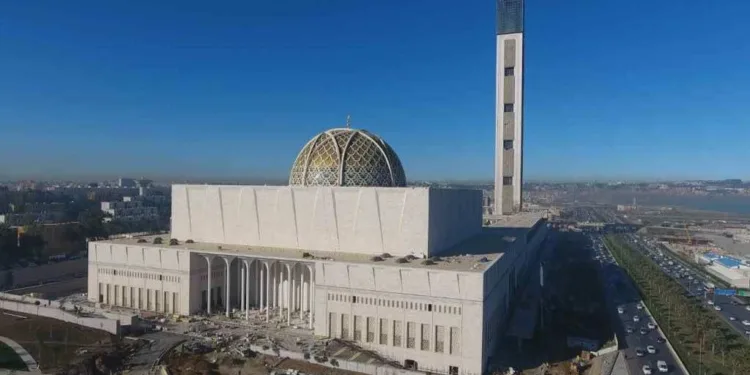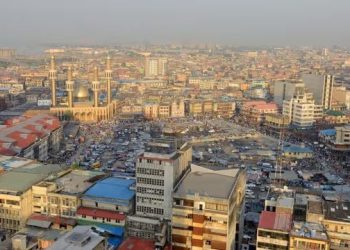After enduring years of political turbulence, Algeria proudly unveiled the largest mosque in Africa along the Mediterranean shoreline.
Originally intended as a symbol of state-sponsored strength and religiosity, the project faced numerous setbacks, including delays and cost overruns.
Despite the challenges, the completion of this grand mosque stands as a testament to Algeria’s resilience and determination to realize significant infrastructural endeavours amidst shifting political landscapes.
Also Read: Elon Musk Sued $128m, Here’s Why
10 Facts You Should Know About The Largest Mosque In Africa
1. Crafted by the ingenious minds of German architectural and engineering firms, KSP Engel and KREBS + KIEFER, the monumental structure stands as a testament to their creative prowess. As reported by the esteemed Italian architectural magazine Domus, their collaborative design has given rise to this magnificent edifice.
2. This beautiful edifice was constructed by a Chinese firm throughout the 2010s, the Great Mosque of Algiers boasts the world’s tallest minaret, soaring to a height of 869 feet (265 meters). According to reports, the project kicked off in 2012.
3. Ranked as the third-largest mosque globally and the largest outside Islam’s holiest cities, its prayer hall accommodates an impressive 120,000 worshippers.
4. Integrating modernist elements with Arab and North African influences, the mosque pays homage to Algerian heritage and culture. Noteworthy features include a helicopter landing pad and a library capable of housing up to 1 million books.
5. Originally set in motion by former President Abdelaziz Bouteflika, who stepped down in 2019 amid protests against his bid for a fifth term after two decades in power, the Great Mosque of Algiers project has faced criticism due to its exorbitant cost.
The former president’s initial intention to name the mosque after himself added to the perception of the project as a potential vanity endeavor. These factors have contributed to ongoing debates and discussions surrounding the mosque’s significance and purpose.
Originally scheduled for inauguration in 2020, the opening of the Great Mosque of Algiers faced delays, partly attributed to the global COVID-19 pandemic.
6. As a result, the grand unveiling occurred four years later, coinciding with the tenure of the new president, Abdelmadjid Tebboune.
These delays, while frustrating for some, have allowed for further refinement and enhancement of the mosque’s facilities and infrastructure, ensuring its readiness to serve the community for generations to come.
7. Standing at a remarkable height of 869 feet (265 meters), the Great Mosque of Algiers proudly holds the title of the world’s tallest minaret, the second-tallest building in Africa and the largest mosque in Africa.
8. Situated just a few kilometres from the historic town centre, the mosque is part of an expansive complex that will feature a diverse range of amenities, including shops, restaurants, libraries, museums, and residential apartments. This multifaceted space is envisioned to be more than a religious centre; it aims to be a vibrant hub that caters to various aspects of community life and cultural enrichment.
9. Completed over seven years, the monumental undertaking commanded an astounding investment of $898 million, showcasing the dedication and resources poured into its construction.
10. Spread across nearly 70 acres of land, the mosque stands as a grand architectural marvel adorned with intricate embellishments of wood and marble, meticulously crafted to incorporate Arab and North African design elements, adding a touch of cultural richness to its majestic presence.
Meanwhile, Ali Mohamed Salabi, the secretary general of the World Union of Muslim Ulemas, said the inauguration would lead Muslims “towards goodness and moderation.”
While the inauguration ceremony held significant symbolic importance, it served more as a formal acknowledgement of the completion of the mosque’s construction.
Notably, the mosque has been accessible to tourists in Algeria since 2019, with its doors welcoming worshippers for prayers as early as October 2020, marking a milestone in its operational journey. The largest mosque in Africa is indeed monumental.










